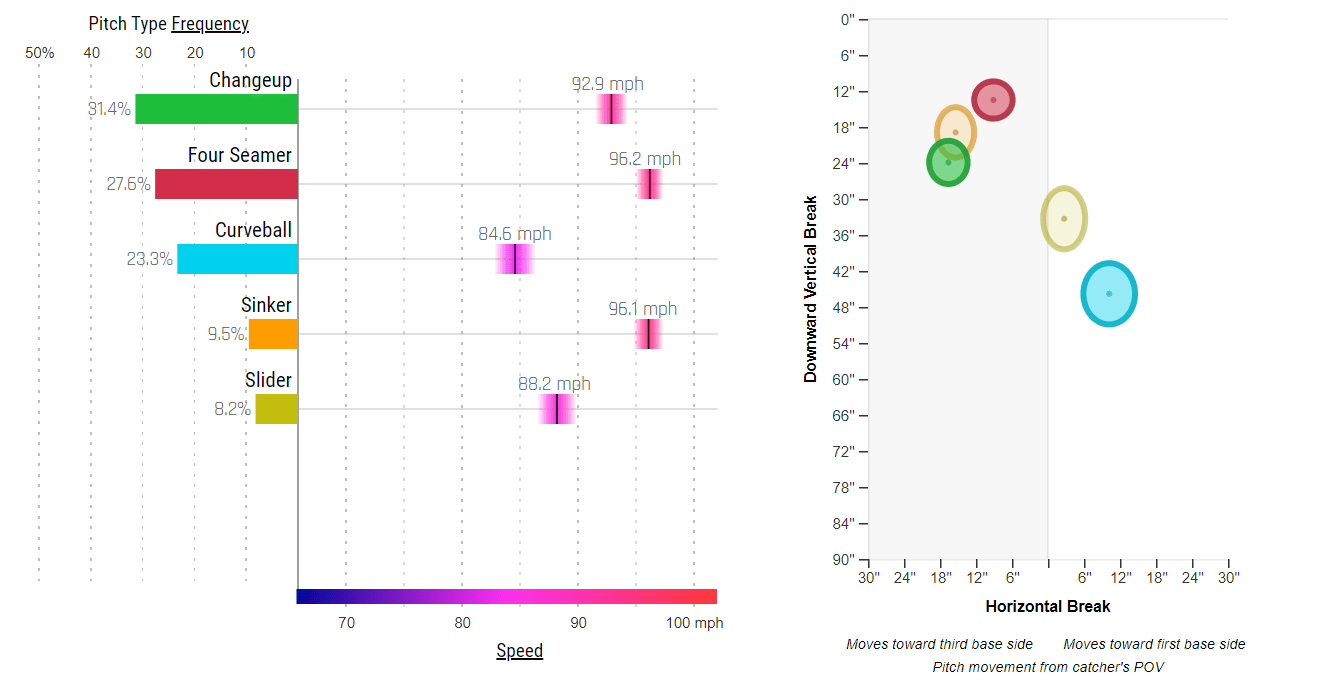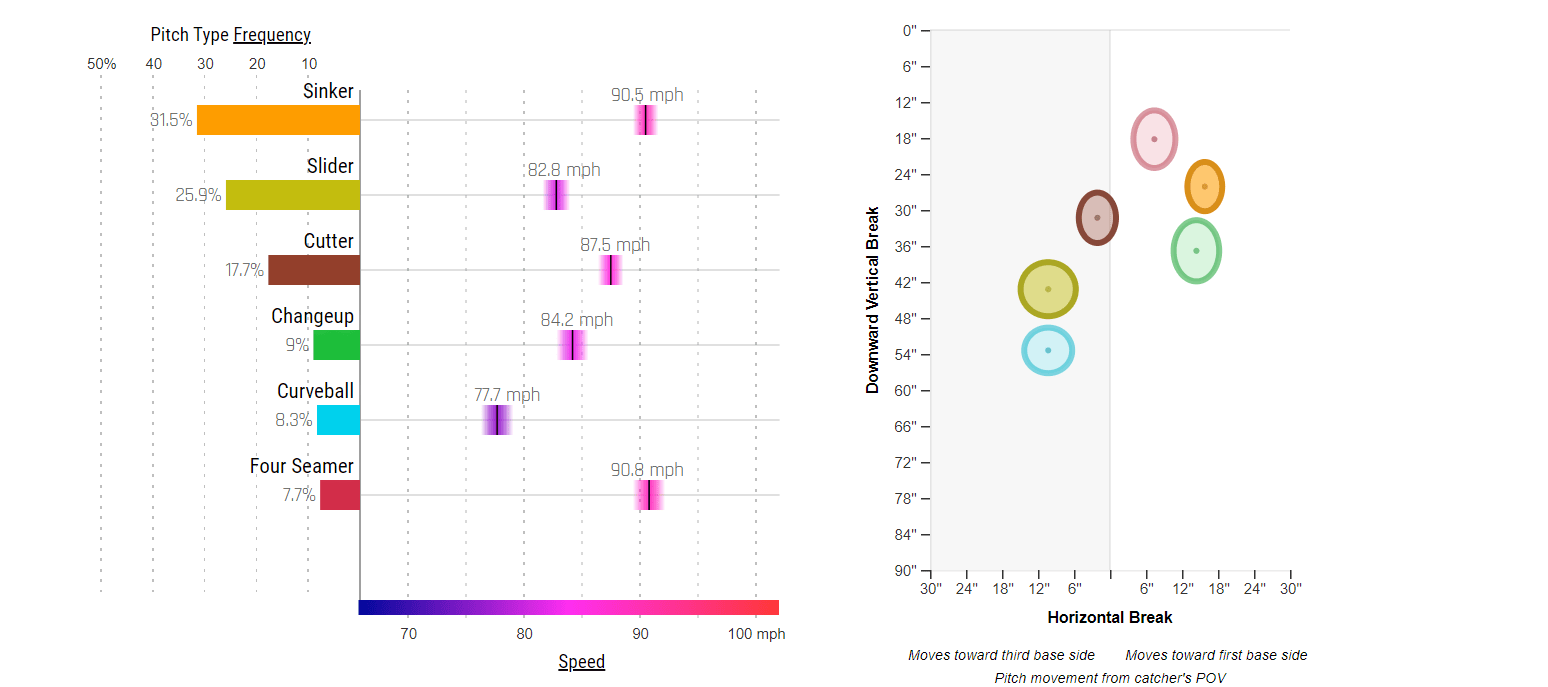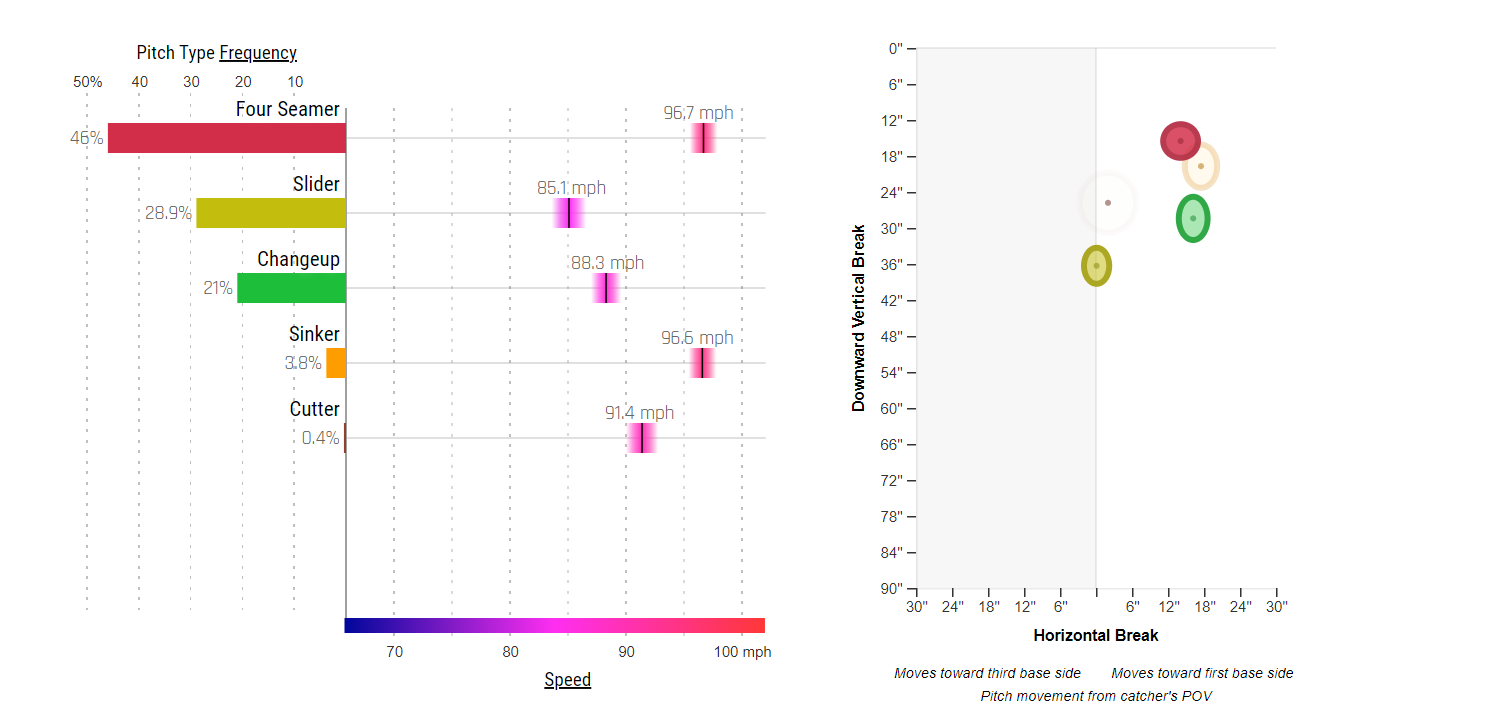Throughout the 2023 offseason, many reports have emerged describing Marlins pitchers reportedly being available for trade. In most articles, these three pitchers are Edward Cabrera, Braxton Garrett, and Jesús Luzardo, all of whom are young, talented starters with success at the Major League level.
This isn’t the first time the Marlins have been willing to shop their young starters for controllable talent in return. In January 2023, the Marlins traded pitcher Pablo López to the Twins with a pair of prospects to acquire Luis Arraez.
With the Marlins’ long line of young, talented pitchers, including Eury Pérez, Max Meyer, and potentially soon-to-be-starting A.J. Puk, their flexibility to acquire hitting in exchange for other pitchers is reasonable.
However, it’s unlikely that the Marlins will find a match for the high price opposing teams will have to pay to acquire such talented pitchers, as spring training begins shortly and many other starters remain in the free-agent market.
This still leaves open the possibility of a mid-season trade. Regardless, I believe it’s worth exploring the futures of these pitchers based on their MLB experience thus far, and how they will perform no matter the team they play for.
Edward Cabrera is the youngest pitcher of the three while possessing the least MLB innings, with 197.2 over the past three seasons. 2023 saw Cabrera post a 4.24 ERA, 1.445 WHIP, and 4.43 FIP over 99.2 innings.
Cabrera’s best asset is his stuff; he throws hard, with a lot of movement and little command. Cabrera has a slightly above-average 5.02 PLV, which is held to this due to his poor location. Cabrera benefitted from an elite 30.9% whiff rate, but his awful 38.0% zone percentage led to an abysmal 15.2% walk rate. To read more about how poor command hurts pitchers like Cabrera, my previous article goes into the differences between control and command and how certain pitchers succeed despite a low zone percentage.
Aside from the command issues, Cabrera’s excellent stuff allowed for a premium 55.7 ground-ball rate and 87.6 MPH average exit velocity in 2023, making his expected stats equally impressive. This is largely due to his impressive arsenal of pitches:

Data via Baseball Savant
Cabrera’s most used pitch, his changeup, is the most unique part of his already unique profile. While Cabrera’s whole arsenal is thrown hard, his changeup averaged 92.9 MPH, the fastest in the league. At this speed, along with its elite horizontal movement, it makes sense why Cabrera would use it most frequently.
In addition to his changeup, Cabrera’s curveball stands out through its above-average velocity while generating a great 38.0 whiff rate. While occasionally hit hard, it served as a great put-away in two-strike counts, in contrast to his changeup-heavy approach.
Going into 2024, Cabrera’s biggest problem stands out in his command. If this were to improve, Cabrera could easily rise to the top of whatever rotation he’s with over the next few years of his career. Otherwise, Cabrera could still see success as a high-potential, middle-of-the-rotation starter.
Braxton Garrett performed great in his first full MLB season in 2023, posting a 3.66 ERA, 1.15 WHIP, and 3.68 FIP. After an equally impressive 2022, albeit in about half the innings, Garrett proved himself to be a key part of the Marlins rotation in 2023.
Garrett is a very different pitcher compared to Cabrera, thriving through elite command despite poor velocity. Garrett posted an excellent 4.4% walk rate in 2023, which has consistently improved as his time in the majors increased.
Garrett’s lack of velocity contributed to his poor 90.2 MPH average exit velocity, and while his 49.0 groujnd-ball rate was above average, his expected ERA of 4.63 indicates batters were unlucky in their results against Garrett.
Pitchers who get “lucky” from ground ball results are typically backed by an impressive infield defense. This was not the case for Garrett, as the Marlins’ infield defense was 2nd to last in OAA in 2023. This weak defense could suggest Garrett wasn’t lucky but instead has found a way to succeed despite his poor expected stats. Instead, Garrett’s unique pitch profiles could have contributed to his “overperformance.”

Data via Baseball Savant
One characteristic that stands out most in Garrett’s pitches is how slow his fastballs are. Both his sinker/four-seamer are under 91 MPH on average. While some pitchers excel despite a slow fastball, it takes elite command and solid movement to work over a large sample.
Garrett possesses both, as his sinker generates solid results despite a poor 11.0% whiff rate in 2023. Garrett also located his sinker exceptionally, as his CSW%, which combines whiffs with called strikes, was a well-above-average 32.7%.
Garrett’s sinker was complemented by his great slider, which had an elite 40.9% whiff rate in 2023. His changeup, also, had only an 86.7 MPH average exit velocity with a 33.0 % whiff rate. Outside of these three, however, his cutter and curveball performed poorly, and his four-seamer did not have the velocity to perform well consistently.
For Garrett to succeed with his low velocity, ground balls are key. If Garrett were to stay with the Marlins, an improved infield defense could certainly improve confidence in his performance for 2024. Otherwise, Garrett’s upcoming season could see some regression in performance, unless Garrett’s funky pitching continues to play above expectations.
Jesús Luzardo is the most established out of the three and is likely to be the Marlins’ ace in 2023 with Sandy Alcantara out for the season. Luzardo, a highly regarded prospect with the Athletics, struggled in his early days with the Athletics, before settling into the Marlins rotation in 2022. Luzardo posted a 3.58 ERA, 1.125 WHIP, and 3.55 FIP over 178.2 innings in 2023.
Before 2022, Luzardo’s main problems were home runs and walks, posting a 1.6 HR/9 and 3.7 BB/9 in the majors. From 2022-23, when Luzardo settled into a 3.52 ERA, he posted a 1.0 HR/9 and 2.9 BB/9, both solid improvements that led to his establishment as a very solid pitcher for the Marlins.
Unlike Cabrera or Garrett, Luzardo doesn’t have an outlier pitch or a specific strength in his game. Instead, Luzardo is solid in many facets of the game, with no massive issues in his game going forward.
At the game level, Luzardo has similar ground-ball rates and fly-ball rates, fairly normal average exit velocity, and a mediocre 4.96 PLV. However, Luzardo still gets tons of strikeouts with a 10.5 SO/9, a great 31.4% whiff rate, and an elite 30.9 CSW% in 2023. He’s able to accomplish this through two of his best strengths; consistency and approach.

Data via Baseball Savant
Luzardo throws a very hard four-seamer, with significantly more horizontal movement than the league average. To learn more about Luzardo’s impressive tendencies, how his low extension doesn’t seem to hurt his performance, and how Luzardo succeeds with a “deadzone” fastball, be sure to check out Nate Schwartz’s article here.
While batters were roughly league-average against the four-seamer, its unique shape allowed his slider to excel, despite its below-average movement. Batters had an xBA of .170 against Luzardo’s slider, with Luzardo having a monstrous 51.8% whiff rate with the pitch. Along with a 38.2 CSW%, Luzardo’s slider performed incredibly in 2023.
Along with his slider was Luzardo’s changeup, which generated a great 36.1% whiff rate and had elite horizontal movement, similar to his fastball.
While Luzardo employed his sinker in select games, it was never a consistent part of his arsenal. During his first start in 2023, Luzardo used it 18.7% of the time, and while its results were solid, it never saw consistent usage for the rest of the year.
With this three-pitch combo, Luzardo pounded inside and avoided pitching away to batters, which generated great results. Luzardo had a below-average zone percentage of 43.1%, and still put away batters 22.2% of the time, which is well above average.
By attacking the inside half of the zone more than other pitchers, Luzardo got late swings and mostly limited the home run ball with his four-seamer, despite its poor vertical movement.
Overall, Jesús Luzardo is one hell of a pitcher. Wherever he pitches, Luzardo should be able to get consistently solid results, and if another good pitch is added to his arsenal (sinker return?), Luzardo could very well become a top-10 pitcher in the game.
Is a Trade Likely?
Generally speaking, no. With this little time left in the offseason, I’d be surprised to see a team throw out as big of a package as the Marlins are seeking to obtain one of these three pitchers. At some point in 2024, however, there’s a good chance at least one of these guys will be moved.
Pitching is sparse. Many teams lack the depth to simply add a solid pitcher to the starting rotation when need be. The Marlins have this.
As the season progresses, injuries take place, leaving many teams without the depth the Marlins have looking for a consistent starter to fit into their rotation. If the Marlins are willing to trade as the season progresses, many teams will be in high pursuit of their services, especially at the trade deadline.
Overall, these are young pitchers who could continue to improve in 2024 and the years following, just as many Marlins pitchers have in the past. Trades happen, and regardless of the team they play for, these three pitchers will hopefully see more success in their futures.
